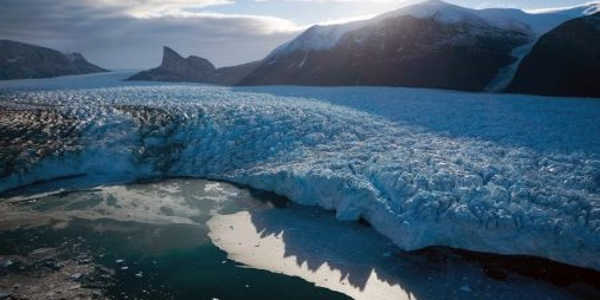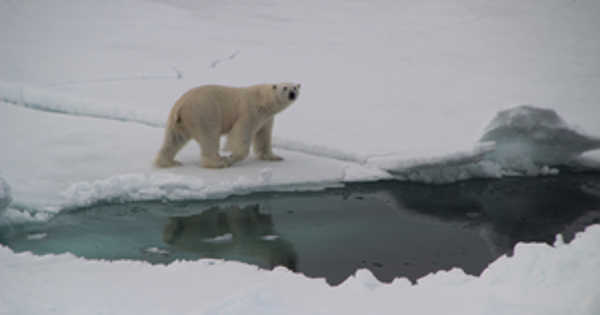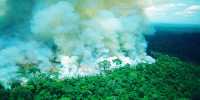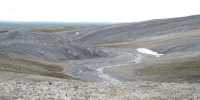The cold polar oceans support some of the world’s largest food webs. At the bottom are microscopic photosynthetic algae. However, a new study suggests that human-caused climate change is displacing these important cold-water algae communities with warm-adapted ones, a trend that threatens to destabilize the delicate marine food web and change the oceans as we know them.
Phytoplankton is microscopic photosynthesizing organisms that live at the bottom of marine food webs. However, they differ across the globe. Prokaryotes predominate in phytoplankton communities in warmer waters, including the tropics (microorganisms without a defined nucleus).
Colder waters near the poles, on the other hand, tend to favor eukaryotes (microorganisms with a nucleus). These photosynthesizing eukaryotes, or algae, serve as the foundation of productive food webs in cold but fertile polar waters.
“A lot of our food comes from the North Atlantic, North Pacific, and South Pacific fisheries because of eukaryotic phytoplankton, not prokaryotes,” said Thomas Mock, senior author of the study and marine microbiologist at the University of East Anglia (UEA, UK). “Prokaryotes cannot produce all of the juicy proteins and lipids that eukaryotes can.”
Warmer waters and communities dominated by prokaryotes, however, could replace those dominated by eukaryotes much more easily than previously thought, according to a new study published in Nature Communications. “That would have significant consequences for the entire food web, and thus ecosystem services on which we all rely,” Mock explained.
Mock and the other lead scientists began the study, a collaboration of eight institutions led by UEA and including the U.S. Department of Energy (DOE) Joint Genome Institute (JGI), a DOE Office of Science User Facility located at Lawrence Berkeley National Laboratory, with the goal of understanding the nuance and gradation of how eukaryotic phytoplankton communities change with latitude.
The cold polar oceans give rise to some of the largest food webs on Earth. And at their base are microscopic, photosynthetic algae. New study suggests, displacing these important cold-water communities of algae with warm-adapted and threatens to destabilize the delicate marine food web.
An invisible boundary
The team embarked on a Lewis-and-Clark-style expedition to explore, collect, and catalog samples, as well as look for patterns in algal communities, such as algae-associated microbiomes, which influence algal diversity and gene expression. On four research cruises from pole to pole, they dipped their self-closing containers into seawater to sample algal communities along transects in the Arctic, North Atlantic, South Atlantic, and Southern Oceans.
They sequenced DNA’marker’ gene sequences to identify the microbes after isolating the algal communities on filters. The team also sequenced the algae’s RNA transcripts to determine which genes they were expressing. The JGI Community Science Program was used for all sequencing.
The team discovered that algal communities did not change gradually across the global ocean using an ecology metric known as beta diversity. Instead, they divided the world into two broad geographical groups: those in colder, polar waters and those in warmer, non-polar waters. In other words, some people enjoy it hot, while others do not.

“We can erroneously consider the ocean to be a homogeneous medium. In reality, it isn’t because nutrients, temperatures, and other physicochemical properties vary “Igor Grigoriev, JGI Fungal & Algal Program Head, was one of the study’s co-authors. “However, there are no limits in the ocean. However, what was discovered here is an invisible partitioning of algal communities.”
The researchers discovered that the boundary, or biodiversity ‘breakpoint,’ between these algal communities occurs in moderate waters with an average surface temperature of about 58 degrees Fahrenheit – a cool intermediate between the ocean’s extremes of 28 and 97 degrees Fahrenheit.
“The authors of the study highlight this fundamental observation of cold and warm microbial networks, as well as how clear and stark the biogeographic boundary between them is. In that regard, the data is somewhat lovely “Andy Allen, a biological oceanographer at the University of California, San Diego, and the Scripps Institution of Oceanography who was not involved in the study agreed. “However, the findings also point to a level of vulnerability that we may not have been aware of,” he added. “If the system is disrupted, it may be difficult to return to baseline.”
Climate change is indeed having a significant impact on sea ice and water temperature in polar regions, putting these polar communities in jeopardy. “We know so little about these algal communities; they could have beneficial discoveries, such as antibiotics, pharmaceuticals, and novel enzymes that function at low temperatures,” said Katrin Schmidt, co-lead author of the study with Kara Martin. “However, these ecosystems are literally vanishing.”
Driven by climate change
The researchers used a model from the Intergovernmental Panel on Climate Change (IPCC) 5th Assessment Report to predict where and how fast the 14-degree Celsius boundary will move. “Climate change is to blame: warm water communities are displacing cold water communities. And this alters everything “Mock stated.
According to Schmidt, the steady march of warmer waters polewards could have disastrous consequences for marine organisms in these food webs. Several whale species, including gray whales and humpback whales, migrate to the polar regions to feed. Shrimp feed on algae that cling to the underside of sea ice.
Krill, an organism that thrives in the Southern Ocean, looks like shrimp, and is food for larger organisms such as whales, penguins, and seals, is one important algae-eater that could be affected by warming waters and shifting algal communities. “The biomass of krill equals at least the biomass of all humans on the planet,” Mock said. “This gives you a sense of how important these organisms are. Imagine the ecosystem’s foundation shifting from cold water, eukaryotic phytoplankton communities to warm water, prokaryotic phytoplankton communities.”
A change in the base would have repercussions throughout the food web, similar to jackhammering the foundation of a cathedral. Furthermore, because phytoplankton (eukaryotic and prokaryotic combined) contributes an estimated 50% of the world’s fixed carbon, changing the balance of eukaryotic and prokaryotic communities may alter the global carbon cycle or the rates at which carbon is fixed and metabolized globally.















